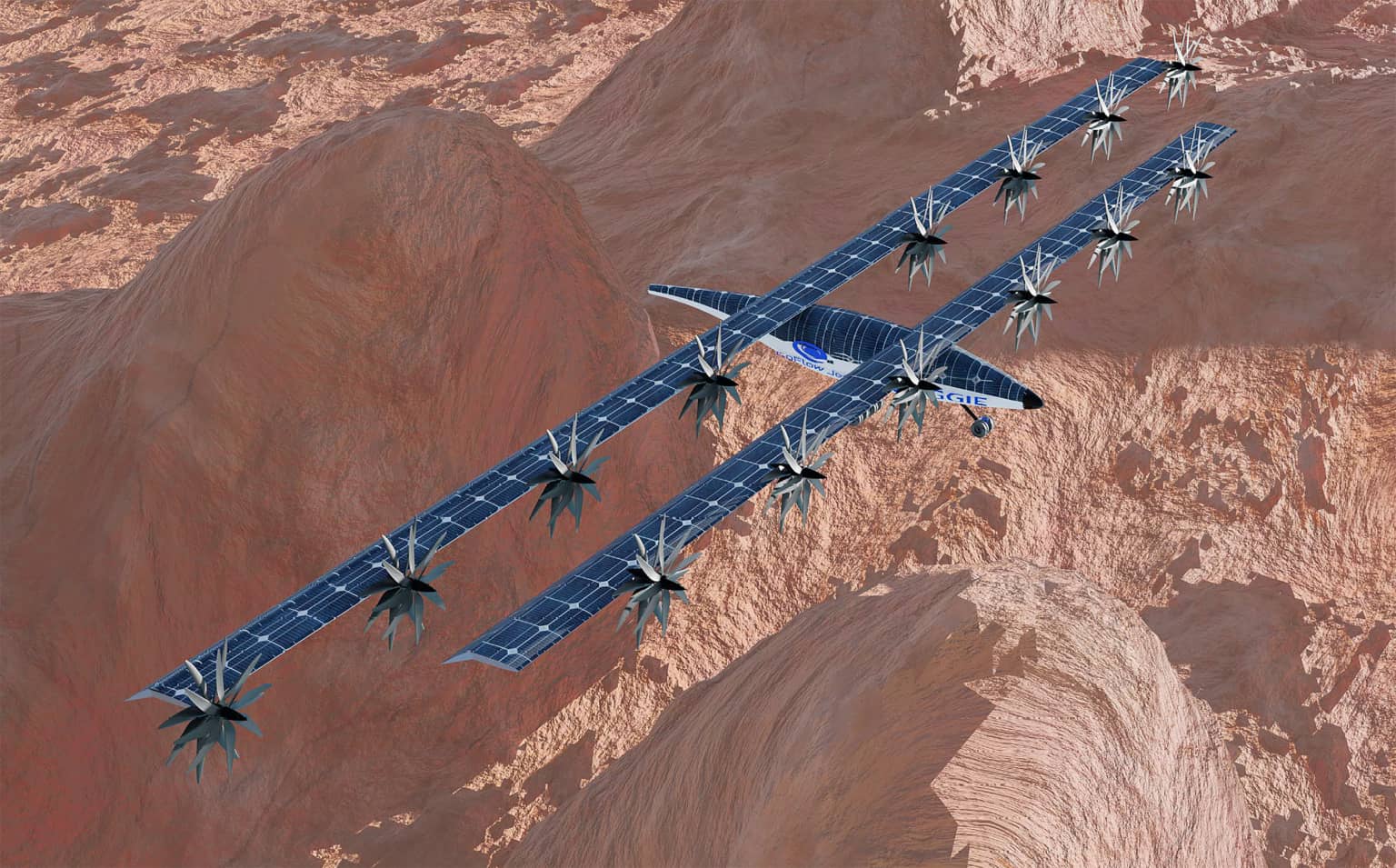MAGGIE (Mars Aerial and Ground Global Intelligent Explorer), a groundbreaking solar-powered aircraft, is being actively explored by NASA for deployment on Mars. This innovative concept features a compact, autonomous fixed-wing design with vertical take-off/landing (VTOL) capability, making it well-suited for the challenging Martian environment. Powered by solar energy, it exhibits impressive operational efficiency, boasting a range of 179 kilometers at an altitude of 1,000 meters on a fully charged battery.
The proposed Mars Aerial and Ground Global Intelligent Explorer or M.A.G.G.I.E., has successfully secured Phase 1 funding approval from NASA’s Innovative Advanced Concepts (NIAC) in January 2024. This marks a significant step forward in showcasing the system’s feasibility. However, it also underscores the need for in-depth exploration, design, and verification under the unique atmospheric conditions of Mars. The initial conceptual study of M.A.G.G.I.E has provided promising indications, emphasizing its potential viability.
Yet, the emphasis remains on conducting further investigations and refining the system to ensure its effectiveness in navigating the challenging Martian environment. If realized, it could revolutionize Martian exploration, conducting the first global-scale atmospheric mission and significantly enhancing our capability to explore vast expanses of the Martian surface.
Note: The Phase 1 funding from NIAC does not assure MAGGIE’s future flight on Mars, but it does signify the space agency’s keen interest in employing similar technology for planetary exploration.
Read also NASA’s new Nuclear Powered Rocket for Mars Mission
The objective of Maggie (Mars Aerial and Ground Global Intelligent Explorer system )
MAGGIE will conduct three atmospheric and geophysical studies on Mars
- Investigation into the origin and timing of the Martian core dynamo by analyzing weak magnetic fields in large impact basins.
- Regional exploration to identify the source of methane signals detected by the Tunable Laser Spectrometer on the Mars Science Laboratory in Gale Crater.
- High-resolution mapping of subsurface water ice in the mid-latitudes, where previous observations from orbit have indicated its presence.
Read also What happens to an astronaut’s dead body when they die in space?


